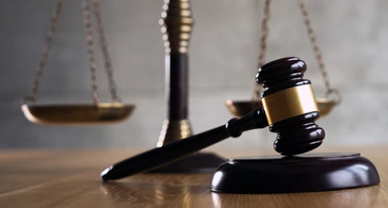CASE ANALYSIS: Indian Medical Association v V.P. Shantha and Ors.
FACTS OF THE CASE:
- Between the years of the formulation of the Consumer Protection Act in 1986[1] and the decision of the above case in 1995, there was a continuous increase in the number of cases related to medical negligence in the country.
- A good number of complaints were filed before the Consumer Courts and forums set up across the country in order to seek compensation under the Consumer Protection Act, 1986.
- There was also an ambiguity surrounding whether medical services and practitioners can be included under the Consumer Protection Act, 1986.
- In addition to this, there were a number of contradicting interpretations regarding the decisions and judgements given, as well as the rationale used by different High Courts, Consumer Courts and other lower courts.
- Many Special Leave Petitions were filed in the Supreme Court against these judgements owing to the lack of a uniform judicial approach in the various courts across the country regarding this issue.
- Therefore, in order to ascertain a proper decision regarding the issues, a writ petition was filed by the Indian Medical Association[2] under Article 32 of the Constitution seeking the Supreme Court to decide upon whether the Consumer Protection Act applies to the medical profession or not.
ISSUES RAISED:
The issues raised in this case were:
- Whether the services provided by medical professionals can be considered as “services” as given under Section 2(1) (o) of the Consumer Protection Act, 1986, and if so, under what circumstances?
- Whether doctors, hospitals and nursing homes come under the ambit of the Consumer Protection Act, 1986?
RULES:
In this case, the three judges Justice S.C. Agrawal, Justice Kuldip Singh, Justice B.L. Hansaria unilaterally agreed on and passed the judgement that the professional medical services rendered by doctors and hospitals do fall under the purview of the words “service providers” given under the Consumer Protection Act of 1986.
The medical profession has been brought under the Section 2 (1) (o) of the Consumer Protection Act, 1986.
Section 2 (1) (o) of the Consumer Protection Act, 1986 defines “service” as
“a service of any description which is made available to potential users and includes the provision of (various) facilities but does not include the rendering of any service free of charge or under a contract of personal service.”
Regarding this, the Supreme Court held that the services that are being provided by medical practitioners would fall within the ambit of the Consumer Protection Act, 1986, even though these are “professional” services provided to the public. They also held that even though these medical professionals are governed by the Indian Medical Council Act[3], they are not immune from a claim for damages that can be brought against them regarding medical negligence. It further held that this would be applicable to all doctors and all hospitals, given that they do not provide these services free of cost to all their patients, or are doing so as a contract of personal service. These services cannot be aligned with the “services” mentioned in Section 2 (1) (o) of the Consumer Protection Act, 1986.

Section 2 (1) (d) of the Consumer Protection Act, 1986 defines “Consumer” of service as
“a person who hires or avails of any services for a consideration which has been paid or promised or partly paid and partly promised, or under any system of deferred payment and includes any beneficiary of such services”.
Hence, from the above, it can be held that any patient who is making use of the services offered by medical professionals for a cost can be considered as a “consumer”. As a consumer, he/she now has the right to seek redressal from a Consumer Court in case of any problem or medical negligence faced. However, it is extremely essential that this is done only when there is a monetary consideration present.
ANALYSIS:
In Dr. A.S. Chandra v. Union of India[4] of 1992, a Division Bench of the Andhra Pradesh High Court had held that service being rendered by private medical professionals and hospitals can be considered as “services” under the Section 2 (1) (o) of the Act and the persons availing such services can be considered as “consumers” within Section 2 (1) (d) of the Act.
On the other hand, a few years later in 1994, in the case of Dr. C. S. Subramanian v. Kumarasamy & Anr.[5], a Division Bench of the Madras High Court held that the services that are rendered to a patient by a medical practitioner cannot be termed as “service” under Section 2 (1) (o) of the Consumer Protection Act, 1986 and therefore a patient cannot be termed as a “consumer” within the meaning of the Act.
Similarly, opposite and contradicting approaches were taken in various judgments of the National Commission in the years between the formulation of the Consumer Protection Act, 1986 and the Supreme Court case of Indian Medical Association v V.P. Shantha & Ors.
The English case Bolam v Friern Hospital Management Committee[6] of 1957 played a role in the judgement given by the judges. This case lays down the rules that are used to assess the negligence shown by skilled medical professionals. Through this case, the Court established that the Bolam test shows that a reasonable amount of knowledge and skill is expected from the medical professional. This medical professional also automatically owes a duty of care to his/her patient(s), and must ensure that care is taken while rendering the services that are being paid for. In case of any breach in duties during the taking on the responsibility of the patient’s service, deciding treatment, administrating that treatment, etc., the medical professional can be held liable for medical negligence and can be sued for damages.
Indian Medical Association, the petitioners, sought to convince the Court that medical negligence cannot come under the ambit of the Consumer Protection Act, 1986. They provided a number of arguments to support their claims but they were rejected.
- They stated that medical professionals are governed under a completely different Code of Medical Ethics set up particularly for them, and that the Consumer Protection Act would not be relevant to them. The Supreme Court rejected this, and held that even though these medical professionals are governed by the Indian Medical Council Act, they are not immune from a claim for damages that can be brought against them regarding medical negligence.
- They held that the Act only covered occupational services and not professional services and that these two kinds of services cannot be grouped together as they are different in nature. This was rejected by the Court as well. The Court stated that the services need not always be commercial in nature, and that they must be held liable if found negligent, and that the Bolam test is sufficient enough to measure the medical neglect.
In the end, it was rightly held that medical negligence must come under the purview of the Consumer Protection Act, 1986. It is extremely important that there is a sense of safety and security when using professional services of doctors, nurses, hospitals, nursing homes, etc. In multiple situations, it even comes down to life or death of the patient. It would be very difficult for the family of the victim(s) to get justice if there wasn’t any set Act that provided them with a sense of security in case things went wrong. Thankfully, the Consumer Protection Act can be utilized to get justice in terms of damages in case of any neglect shown by the medical professionals.
CONCLUSION:
The Supreme Court held that the services that are being provided by medical practitioners will fall within the ambit of the Consumer Protection Act, 1986.
It further held that this would be applicable to all doctors and dentists, and also all hospitals and nursing homes. However, the hospitals and doctors who give treatments free of cost to every single patient are exempted from this Act. Additionally, they are exempted even when they are doing a personal service to their patient(s). These services cannot be aligned with the “services” mentioned in Section 2 (1) (o) of the Consumer Protection Act, 1986, as the monetary consideration is missing here. No patient can approach the courts in case of negligence while performance of a free medical service.
In the late 80s and early 90s, it had become extremely essential for a decision to be made by the Apex Court regarding the confusing contradictions in the Courts. A set conclusion was needed on whether the services rendered by the medical community could fall under the ambit of the Consumer Protection Act, 1986. Hence, this Supreme Court judgement proved to be an important landmark case which helped decide the real scope of the Act, and helped in clearing the ambiguity and confusion that had previously made it hard to decide. This enabled future cases to be solved faster and more effectively without any delay.
However, this decision has also received criticism from the medical community. They claim that this inclusion in the Consumer Protection Act of 1986 has made them vulnerable to multiple suits, some of which may even be wrongly filed against them, in order to escape paying medical bills, among other things.
Overall, the growing cases of medical negligence have been scary to witness. The main objective of the Act is to protect the welfare, security and safety of the patients of the country, and that is why this landmark judgement of 1995 brught about a good change in the Act.
Author:– Manya Manohar, in case of any queries please contact/write back to us at support@ipandlegalfilings.com or IP & Legal Filing.
[1] Consumer Protection Act, 1986, No. 68, Acts of Parliament, 1986 (India).
[2] Indian Medical Association v V.P. Shantha & Ors, AIR 1996 SC 550
[3] Indian Medical Council Act, 1956, No. 102, Acts of Parliament, 1956 (India).
[4] Dr. A.S. Chandra v. Union of India, 1992 (1) ALT 713
[5] Dr.C.S. Subramanian v. Kumarasamy & Anr., (1994) IMLJ 438
[6] Bolam v Friern Hospital Management Committee [1957] 1 W.L.R. 582


